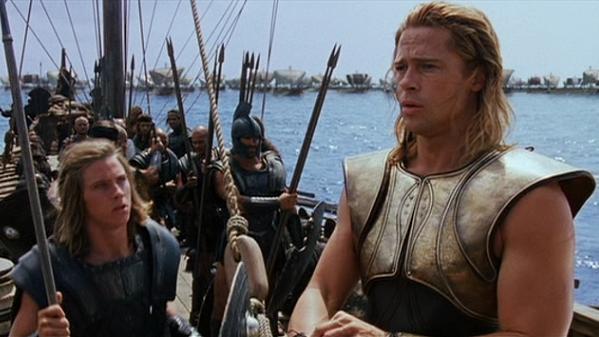It might have been Mark Twain who wrote: “Never let the truth get in the way of a good story”, but it was Hollywood that took it literally. Time and again, in sagas and biopics across all centuries, directors take all sorts of historical liberties: with their characters’ lives, with the events their characters shape or with the situations they find themselves in. But there is one thing that unites every historical movie ever made: how many liberties its director took was rarely the defining factor in its success (or, indeed, failure).
This is because people ultimately go to the cinema to be entertained, not to conduct research for upcoming history papers. And, particularly when it comes to the murky world of ancient history, it doesn’t always pay to be persnickety. The further back we go, the greater the void between what we think we know and what we actually know. Having said that, historical accuracy is endlessly fascinating, and this article points out some of the main areas where some of the biggest historical movies in recent decades have been faithful and where they’ve differed from historical reality.
Troy (2004)
Admittedly we’re not dealing so much here with ancient history here as with ancient mythology. But it’s still a movie littered with problems. It’s not director Wolfgang Petersen’s decision to leave out the gods (apart from that weird scene with Achilles, his divine mother and that seashell necklace). It’s not even why, after years of Achilles killing masses with exactly the same jump-up-high-and-stab-them-in-the-upper-back move, the Trojans don’t start wearing armor to protect themselves there. It’s the dozens of other serious, mythological/historical errors.

Making Brad Pitt’s Achilles constantly refer to Patroclus as his “cousin” is frankly insulting to ancient attitudes towards homosexuality; patronizingly watering their relationship down to make it more palatable to modern audiences. Although the “Iliad” is never explicit about the two warriors being lovers, later Greek philosophers, playwrights and orators weren’t so sure. Plato, Aeschylus and Aeschines portrayed their relationship as being sexual, and Alexander the Great seems to have done so too when he and his lover Hephaestion publically honored their joint tomb in front of the entire army while traveling through Troy in around 334 BC.
But at least Wolfgang Petersen is loyal to the “Iliad” in killing off Patroclus. Where he goes completely off script is in killing off two leaders of the Greek army: Helen’s rather irate husband, Menelaus, and his warmongering brother Agamemnon. In the movie, Hector bumps Menelaus off after Hector’s brother Paris disgraces himself by losing one of Hollywood’s most one-sided battles. With Paris sniveling at his feet, Hector shoves a sword through the unsuspecting Menelaus: successfully bringing this cringe-worthy scene to an end. In Greek mythology, Menelaus returned home after the war with Helen, and together they went on to live a long and thoroughly unhappy life.
But the absolute nail in the coffin—or arrow in the heel, if we’re going to go there—was the decision to kill off Agamemnon. According to Greek mythology and, perhaps, history, after the Trojan War Agamemnon returned to Mycenae carrying his spoils of war. Among his spoils was the Trojan princess Cassandra (cursed never to be believed), and the fact that he brought back a royal Trojan mistress—combined with the small issue that he sacrificed his only daughter Iphigenia to Artemis, the goddess of wind—was enough to drive his wife Clytemnestra to extreme measures: throwing-a-net-over-him-in-the-bath-and-stabbing-him-to-death-type extreme.

